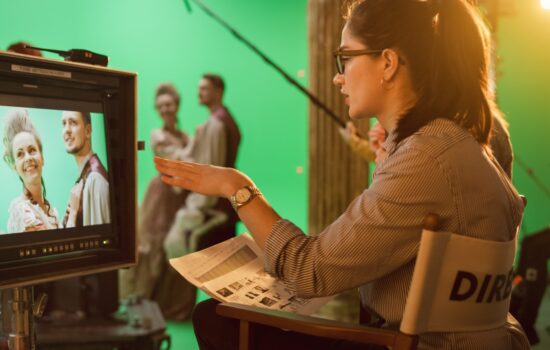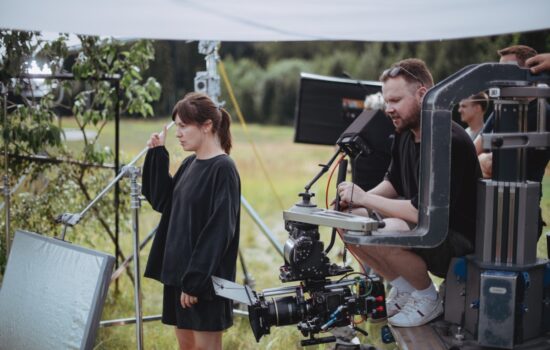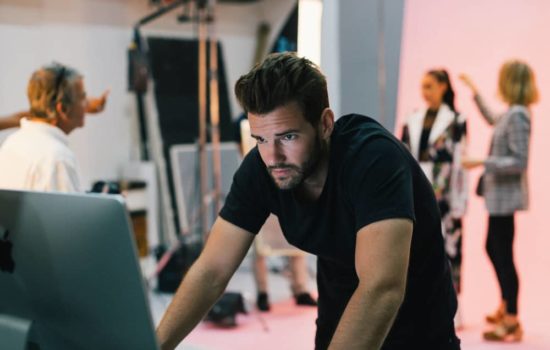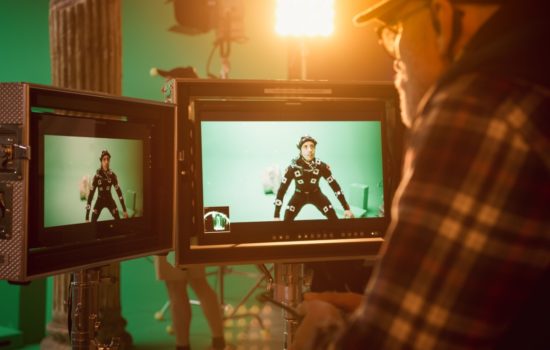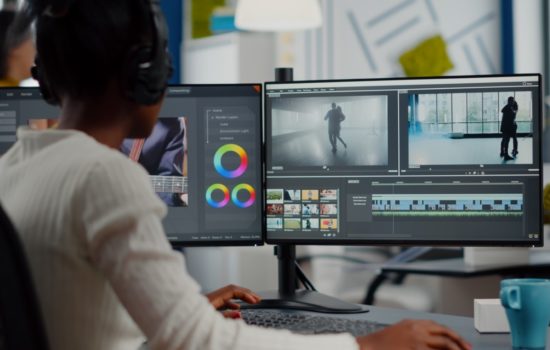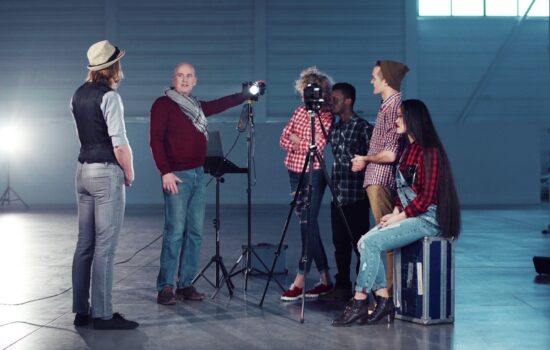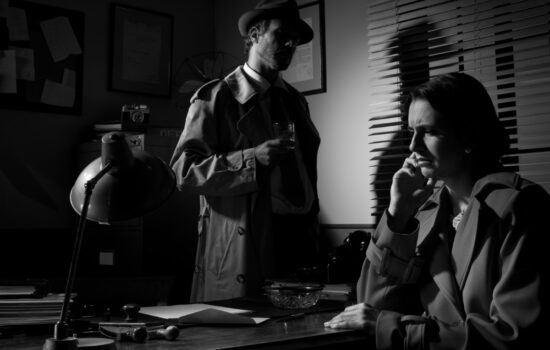Digital Imaging Technician
Career Overview
The Digital Imaging Technician is responsible for wrangling all data on set and duplicating it for safety. They’re responsible for ensuring all footage is available and intact for the Editor.
Alternate Titles
DIT
Avg. Salary
$700 per day, plus gear1
Salary Range
$250 – $750 per day, plus gear1
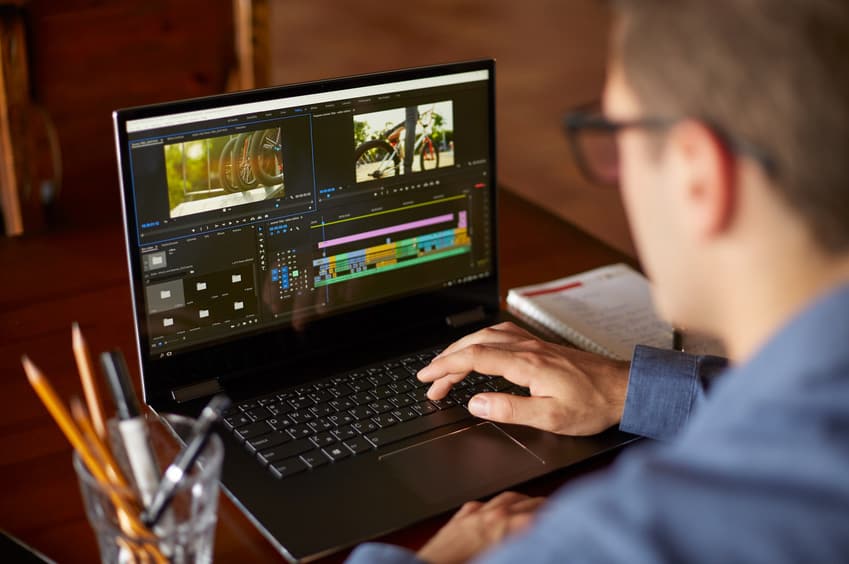
How To Become a Digital Imaging Technician
People also ask
Career Description
The Digital Imaging Technician takes memory cards from the Camera Department and transfers the files to a hard drive. Next, they’ll back up those files once or twice, depending on the project. Jonathan Rau, a rising DIT, explains, “My main duty is to keep any footage that was filmed safe and duplicate it in case we run into any future corruption issues.”
“I also import those files into an editing program and organize them in a way that makes sense for an Editor to use them when they join the project.”
The Digital Imaging Technician became a career when hard drives replaced film canisters. Their job is conceptually easy, however, if a DIT is bad, then they can cost a production millions of dollars. It is the DIT’s primary responsibility to make sure that all footage shot will still be there when it’s time for the edit.
What is a Digital Imaging Technician?
Digital Imaging Technicians are experts regarding the digital elements of cameras used during filmmaking and act as consultants to Cinematographers on those elements.
Salary
The average day rate for a Digital Imaging Technician is approximately $700, plus the price of gear. The day rate for a Digital Imaging Technician ranges from $250 to $750 plus gear.
Working as a Digital Imaging Technician is a freelance position, so their rate is negotiated for every job. As their career grows, then so will the rates that they’re offered.
Rau explains, “Lower-level productions are anywhere from $100 to $200 per day, with the DIT providing their own equipment. Production should always provide storage drives since they will be taking them home at the end of the day. As you get on higher budget productions and are entrusted with more responsibility, you should be paid more.
“Additionally, production should pay for your equipment rental package, too. That can range anywhere from $100 to $500 per day, in addition to whatever your labor rate is. The equipment is an investment and production should respect that investment.”
It’s good to remember that a lot of times when starting out, early projects are going to be for free or a deferred rate. However, this position requires a lot of trust, which must be earned through experience.
Hey, what do you think about trying our new Film Career HelperFilm Career Helper really quick? It’s totally free and could help get your career moving fast! Give it a try. It’s totally free and you have nothing to lose.
Career Outlook
The lifestyle of a Digital Imaging Technician depends on how long the project they’re filming will be. Rau explains, “You’ll be on set the whole time the project is filming and probably be one of the last people to leave set. They are long days, at least twelve hours. However, in between jobs it’s slow, so you want to find something flexible to supplement your income, especially when first starting out.
“Once a reputation has been established, then it’s a full-time career but it takes time to build up to that. It’s good to remember that when on a job, the DIT is always at the mercy of the production schedule.”
That means if it’s a day shoot then they’re there all day, and if it’s a night shoot, then they’re there all night. Movies shoot over weekends and holidays too. It is a life commitment to choose to work in production. Therefore, people who are interested in pursuing this career need to evaluate their life and make sure it’s something that they really want to commit themselves to doing.
The Digital Imaging Technician works very closely with the Director because they always want to see the footage coming in. The Director wants to check shots and make sure that nothing needs to be redone or look back on a previous shot to make sure the edit will work. Other crew members who constantly interacts with the DIT are the 2nd Assistant Camera, Drone Operators and Drone Pilots. It’s their responsibility to drop off media cards.
Finally, the Script Supervisor asks to review footage as well to make sure that their notes line up. When a project finishes, the Editor or Assistant Editor will receive the files for post-production.
What does a Digital Imaging Technician do?
The main responsibility of a Digital Imaging Technician is advising the Cinematographer of a project on elements, such as brightness and contrast, that may affect the visual outcome of what is shot during a production.
Career Path
To advance as a Digital Imaging Technician one must constantly search for new projects and foster relationships on movie sets. Due to the gig economy, somebody who may be working as a Production Assistant could be directing a cool project or become a contact point in the future.
Rau states, “I’m always looking for more responsibility, which usually involves higher-end equipment and higher budget movies to handle larger file dumps. Entry-level is going to be any sort of data management on set. It might not be officially called DIT but [when] working on smaller projects, if you find yourself handling the cards coming in from whatever camera, then you’re essentially entry-level DIT.
“It would probably be a secondary job on a very small project but any kind of computer job that involves data management is going to be like DIT. It’s essentially transferring whatever computer skills you have into the film industry. Since that was my background I fell into it.”
Many people fall into DIT work because they’re tech-savvy and then build up their rig to be able to handle more intense opportunities. As they gain trust and build relationships, those DITs will work on larger and larger productions.
Getting career opportunities as a Digital Imaging Technician all comes down to relationships. People are usually hired through referrals. Since it’s such a crucial position on set, Producers are extra cautious about taking a chance on a stranger, which makes breaking in tough.
Rau states, “The only reason I started DIT was because I knew a Director who needed that position filled and he knew I had the equipment and skillset to do it. I hadn’t trained specifically to be a DIT. But in my career as an Editor, I’d learned what needed to be done.”
It can be good to start out on student and short films where the intensity will be milder. Most of the time their budgets are smaller, but it’s a good arena for a person to hone their craft and build up a network that will endorse them. Once people see that a person has all the skills to do DIT, then they’re more likely to recommend them for other projects. This becomes the bedrock of having a sustainable career.
- Invest in a nice Mac and a PC so you can have the option to use both.
- Experiment with how files transfer between Mac and PC operating systems.
- Take a DIT out to coffee.
- Shadow a DIT on set.
How do you become a Digital Imaging Technician?
To become a Digital Imaging Technician, you must be knowledgeable in all things digital filmmaking and the cameras that execute it. That means having a background in the digital arts, imaging technology, and video production equipment. You must also know how to communicate the workings of a digital camera to those who may not have the same expertise.
Experience & Skills
A Digital Imaging Technician must be highly organized. They pay close attention to details because if they don’t then footage is lost or corrupted. This can be difficult because their day is filled with multitasking.
Rau explains, “I’ll have one camera card that is offloading while I’m processing and creating proxies for a previous card. Then I must attach those files to an original file in an editing program while the last batch of files is transcoded. Meanwhile, a new card is delivered which needs to be backed up. Everything must be done simultaneously to create a good workflow. Otherwise, it would take forever.”
To work effectively, a DIT needs to know how computer hard drives work, the best way to format hard drives and create partitions that organize the footage. It’s also good to know how to operate across platforms, like Mac and Windows, because every project is unique. Often, both operating systems will be used on set.
“You need to be able to be patient because file transfers are slow. A lot of times you’re just sitting there waiting for the camera department to bring a new card. A good DIT needs to be able to take initiative and work on what’s in front of them while they wait. That means organizing clips in an editing program that will be used for post-production,” advises Rau.
Someone that can stay low key in their job and be reliable will make a great DIT. They’re not a rockstar on set. Instead, they are often in their own room, far away from any troubles, working in solitude. It’s important that a Digital Imaging Technician can be by themselves, but also interact with a crowd. They are still on set and will run into others at Craft Services.
Education & Training
A Digital Imaging Technician is a trade that can be learned by developing a fundamental understanding of computers. Rau says, “Any IT training is useful. Any video editing education is also useful. It can be good to work as a Production Assistant on set to see how a film set operates as well.
“To become a great DIT, it means understanding how all the pieces fit together: how set is run, how your computer works and what will make the Editor’s life easier in post-production. Study video editing so you know how an Editor would like their project set up and they will recommend you for opportunities.”
A great DIT won’t just study the process of effectively copying files and applying Look Up Tables (LUTs) to images, but will also understand how set works and what can be done to make post-production easier so money is saved.
Additional Resources
Digital Imaging Technicians belong to Cinematographers Guilds, which vary state by state. In Los Angeles, it is Local 600. However, that resource will come into play mostly once a person’s career grows. When first breaking in, it can be good to rely on Facebook groups, non-profit film organizations like Film Independent and local mixers to push their career forward.
Regarding technical knowledge, Rau states, “Anytime I have questions about computer-related issues or software, I go to YouTube or search on DuckDuckGo. I can find an answer very quickly. A lot of the information is available. Just set the time to search what’s out there because there can be a lot of garbage to wade through.”
There’s no one-stop-shop for answers and support in becoming a DIT, but people can lean on online groups such as those on Facebook, non-profit organizations and YouTube tutorials to teach themselves to solve any problem out there.
FAQ
What is the single biggest suggestion you would give to someone wanting to get into this career?
“My biggest suggestion to anyone looking to become a Digital Imaging Technician is to familiarize yourself with the Premiere Pro, Final Cut X, and AVID editing systems. It is a crucial part of the career to be able to back up a project’s files and prepare them for the next step in a film’s production.
“That’s one of my main selling points. If I’m able to do a lot of assistant editing work while being the DIT, it will save Producers money and justify my rate. The more a DIT can help a production move faster and more efficiently, the greater their chances are of getting hired and referred for another opportunity.”
What’s the #1 mistake people make when trying to get into this career?
“The biggest mistake a Digital Imaging Technician can make is to not have the proper equipment. If they don’t have enough hard drives to back up the project, there will be serious consequences. It’s inevitable that files will get corrupted and fail, making them unusable. If it isn’t backed up in multiple places, then all the time and energy spent to get that footage is wasted. It must be re-shot, which can be a huge expense.
“Therefore, it’s very important to be organized and make duplicates of hard drives. At the end of the day, those hard drives need to be in separate areas, so if something happens to one, the entire movie isn’t lost. Before every production, a DIT needs to estimate how much hard drive space they need.
“As the shoot progresses, they should update the Producer on how much space has been used versus what is left, so if more hard drives need to be purchased they will be. There is no excuse for a DIT to run out of digital space on a film set.”
What is the question people should ask about this career but rarely do?
“What is the workflow of DIT?
“Most people think that working as a DIT is just dumping files but a lot more goes into it. It’s a lot more extensive, including applying Look Up Tables (LUTs), setting up the post-production workflow and providing quality control for the shoot.
“Additionally, when backing up footage and creating proxies, there are a lot of steps. You start the process on one batch of files, then later a separate batch when a new media card arrives. Most people don’t understand the juggling act that working as a DIT is.”
What is one thing I should have asked which I didn’t?
“The DIT acts as the production’s peace of mind. A DIT is often overlooked when it comes to big ‘moments’ on set, but when you’re doing it right, the Director, Producer or anyone else won’t worry about the footage they’ve already shot and whether it will be there in post-production.
“Nothing is worse than getting into post and discovering shots were lost. Digital Imaging Technicians are often unsung heroes of productions and especially on low-budget shoots where people don’t fully understand their role. It’s something that needs to get done and if it’s screwed up, then the whole project is ruined. That is a lot of responsibility.”
If you could describe in one word what makes you successful, what would it be?
“Easygoing.”
Sources

Jonathan Ward Rau
Digital Imaging Technician Jonathan Ward Rau grew up in southeastern Michigan and moved to Los Angeles in 2011. Since his arrival, he has worked on multiple feature films including Cuck, Shooting in Vain, and On His Own. He has also done a few pilots, including Minor Problem Zombie and Family Fitness. His commercial work includes an Axe Commercial Campaign and multiple spec jobs. His work as co-owner and co-operator of production company Cineplicity has been profiled by Voyage LA.
References
- 1Warren, Jeremiah. "Know Your Worth — What Your Peers Charge for Commercial Film Productions". Medium. published: 4 April 2019. retrieved on: 24 August 2020
